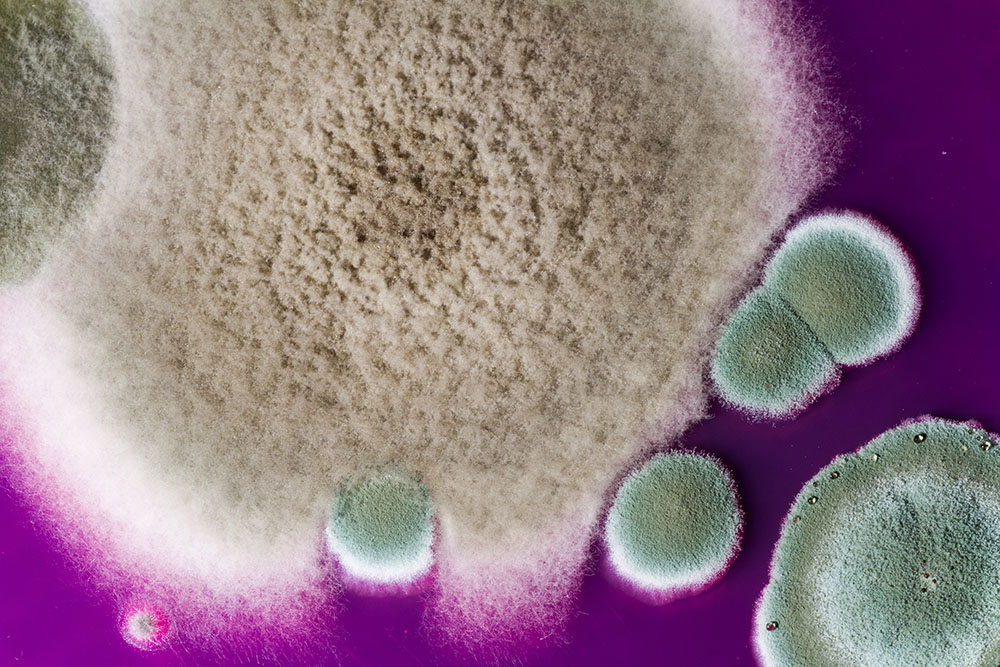What Types Of Mould Can Grow In Your House?

CONTENTS
- Types of indoor mould
- Colour variations in mould
- Most dangerous forms of indoor mould
- Preventing indoor mould growth
- Why professional cleaning services are essential for mould removal
- Frequently asked questions
- Get in touch
There are several types of indoor mould, each with unique characteristics and potential health risks. Understanding what is growing in our homes is crucial, from colour variations to the most dangerous forms. Not only for our well-being but also for maintaining a clean living environment.
We are mould remediation specialists who provide extensive mould cleaning solutions and sanitisation methods. Our team operate nationwide to deliver these services, ensuring your property is safe to inhabit again.
Read on to learn more about mould, their types, the dangers they pose and how professional help can give you control.
Types of indoor mould
Mould can fall into one of three categories at a time, depending on how it can affect people who inhale the spores or ingest the mould. These are allergenic moulds, pathogenic moulds, and toxigenic moulds.
Allergenic moulds are considered non-toxic but can trigger allergic reactions in asthmatics. Pathogenic moulds can cause illnesses in people who are immunocompromised. Toxigenic moulds are the most dangerous growths that can lead to health problems.
To understand these types of mould and their danger levels, we have created a list and their categories. Some of these indoor mould can appear in several categories at once, depending on their stage of growth:
Allergenic
- Alternaria
- Ascospores
- Aspergillus
- Aureobasidium
- Chaetomium
- Cladosporium
- Curvularia
- Fusarium
- Mucor
- Myrothecium
- Penicillium
- Trichoderma
- Ulocladium
- Zygomycetes
Pathogenic
- Botrytis
- Curvularia
- Zygomycetes
Toxigenic
- Acremonium
- Aspergillus
- Epicoccum
- Fusarium
- Myrothecium
- Penicillium
- Stachybotrys
- Serpula
- Torula
Colour variations in mould
Mould is not always the unsightly black spots you might expect. It can grow in various colours, each indicating a different type of mould.
However, mould can change colours based on its current environment — even toxic 'black' moulds can grow in red or green. However, the most common colours for mould are:
- Black
- Green
- Yellow
- White
- Blue
- Orange
- Purple
- Pink
- Red
- Brown
Most dangerous forms of indoor mould
The threat mould poses is not always equal; some types pose more health risks than others. The most dangerous indoor moulds are Stachybotrys, Aspergillus, and Penicillium.
- Stachybotrys is infamous for its toxic effects. Prolonged exposure can lead to serious respiratory problems or skin irritation.
- Aspergillus species vary in their level of danger, but certain strains can cause allergic reactions and lung infections, especially in people with weak immune systems.
- Penicillium, when found indoors, may trigger allergies and asthma attacks.
Indoor mould exposure poses several health risks. Allergic responses are typical, from sneezing and skin irritation to breathing difficulties. Some types of mould can even produce harmful mycotoxins, leading to conditions like mycotoxicosis.
The longer you are exposed to indoor mould, the more your health may suffer. For instance, prolonged contact can cause chronic bronchitis or lung inflammation. Living in a damp environment can be especially hazardous for those with asthma or weakened immune systems.
Preventing indoor mould growth
Staying in a clean, dry atmosphere is fundamental for avoiding mould formation. This involves simple steps like promptly fixing leaks and drying damp areas within 24-48 hours. It is also beneficial to use dehumidifiers, moisture catchers, or air purifiers during humid seasons.
You should keep indoor humidity below 60%, ideally between 30% and 50%. You can measure this using hygrometers - a tool that lets you check home humidity levels.
Improving your home ventilation helps prevent mould growth. For instance, using exhaust fans in the kitchen and bathroom when cooking or showering reduces moisture build-up and prevents mould spores from settling.
Why professional cleaning services are essential for mould removal
Removing mould is not a simple task. Mould is resilient and capable of hiding in hard-to-reach places and returning if not tackled properly. Professional cleaning services have the necessary expertise to tackle mould effectively.
Mould cleaning experts use advanced techniques that eliminate all types of indoor mould, ensuring they do not reappear over time. A DIY approach might seem appealing because it saves money, but most products cannot remediate serious infestations.
These cleaning products may remove visible traces but often fail to address hidden spores or fix underlying issues causing dampness - which means the problem will return.
Mould removal companies perform thorough inspections before starting any work and tailor their strategies based on what they find, whether it is black mould behind your wallpaper or white mould in your basement.
Frequently asked questions
What are the most common types of mould?
The three common mould types are Aspergillus, Cladosporium and Stachybotrys Chartarum.
How do I know what kind of mould I have?
You should hire a professional mould cleaning service to accurately identify a mould type. They will provide conclusive results through lab analysis.
What is the most common mould?
The most widespread household fungus is Cladosporium. It thrives in warm and cool environments - often found on fabrics or wood surfaces.
What kind of mould is toxic?
Various moulds can be toxigenic, like Stachybotrys Chartarum. Prolonged exposure can lead to serious health issues like breathing problems and immune system suppression.
Get in touch
At ICE Cleaning, we offer mould remediation services that utilise some of the UK's leading solutions and technology in tackling mould. We work closely with your local council to adhere to Awaab's Law, providing excellent services to those in social housing.
To learn more about our mould removal services, contact our team today at 0208 066 0360 or enquiries@icecleaning.co.uk. We are available 24/7, 365 days a year, and provide emergency services where we can be on-site within a few hours of your first call.

Speak with me today,
I’m here to help
By asking you a few questions either via phone or email I can immediately provide a realistic estimation of the cost.
You’re in good company. We’ve cleaned for the following commercial clients… View all

Why choose us?
- Cater to a wide variety of cleaning situations
- Nationwide coverage, available 24/7
- Cater to commercial and domestic clients
- Free survey provided prior to quotation
- Emergency response team
- Offer a bespoke service designed to suit all your needs
- All technicians hold professional health and safety qualifications, including BICSc, IOSH, Dewpoint Professional & Safe Contractor
We’re fully accredited
We place best practise, professional expertise and health and safety at the core of our business. We’re fully compliant with all legal obligations. You can view a list of our accreditations below, or visit our Health & Safety page for more information.











-RGB-small.1707319151.jpg)




















